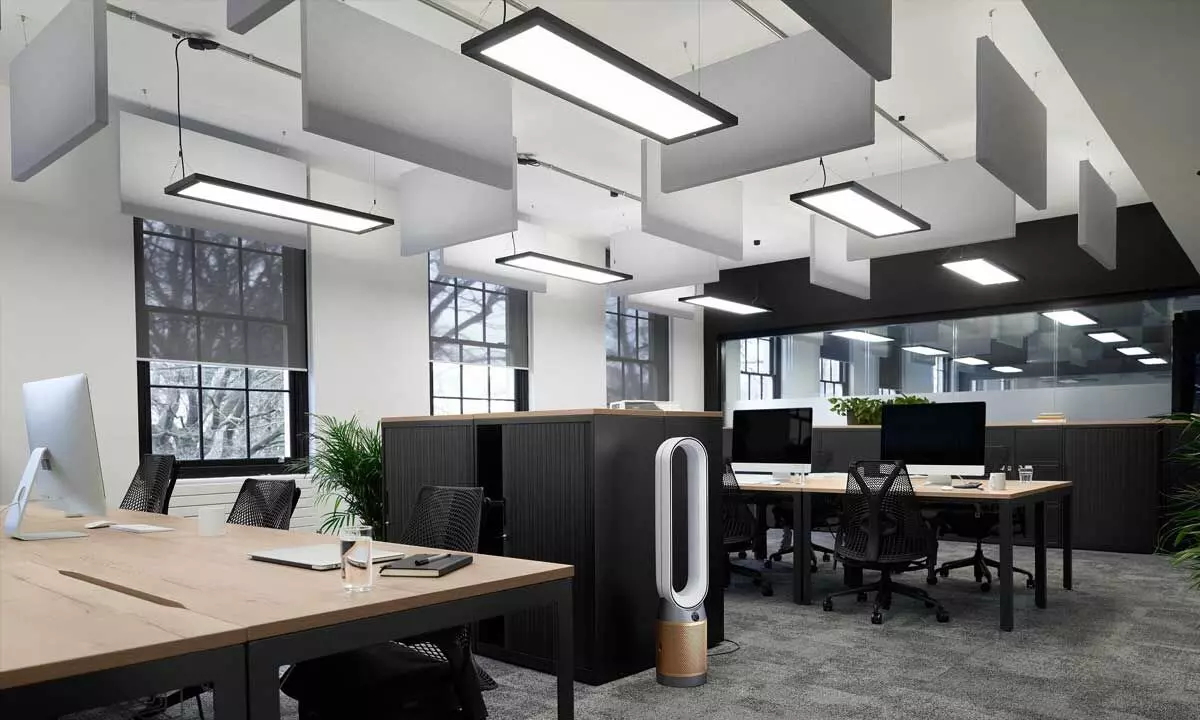Air Pollution: Hidden menace in your office

Air Pollution: Hidden menace in your office
Muzaffar Izamuddin, Design Manager, Environmental Care at Dyson, shares the importance of creating healthy workspaces where indoor air quality is at the top of the day's agenda, and he considers Air Purifiers are Armour against pollutants.
We spend almost 90% of our time indoors - either at home or the office; thus, indoor air quality is of utmost importance to us. While we may be aware of the high levels of polluted air we can be exposed to from outdoor sources, how much do we know about the air we are breathing indoors – especially in the workplace? Just like our homes, our offices too can be a sanctuary of myriad bacteria, viruses, hidden germs and allergens, exposing employees to a greater deal of health hazards; therefore, maintaining a pollutant-free office environment is a growing necessity.
Muzaffar Izamuddin, Design Manager, Environmental Care at Dyson: Shares the importance of creating healthy workspaces where indoor air quality is at the top of the day's agenda and shares a list of things that could be contributing to unhealthy office spaces and tips to keep your workspace free of pollutants.
Indoor air pollution in workplaces
Air pollution inside buildings can come from a range of sources. Simple activities like daily cleaning or general refurbishment in the workplace can emit invisible particles which could impact staff wellbeing. Some of the sources of indoor pollutants or low air quality are:
Upholstery and decor items
Formaldehyde is a colourless gas pollutant which can be released by furniture and wooden products containing formaldehyde-based resins. Carpets, carpet cleaners, wallpapers, paint, furniture and floor varnish could be a primary source of air pollution inside your offices.
Poor ventilation
Ventilation is a common method of controlling an indoor environment with airflow, often involving air movement between outdoors and indoors. One way to increase ventilation is by opening windows. However, by doing so, poor air quality from the outdoors can come inside, particularly if the office space is in a city location with high traffic flow. On the other hand, built-in ventilation systems in spaces may not have adequate filtration systems, meaning that airborne pollutants are simply being blown around the room. These pollutants can include PM2.5, PM10, Volatile Organic Compounds (VOCs) like formaldehyde and nitrogen dioxide (NO2), emitted from indoor and outdoor activities.
Excessive use of cleaning products
Chemical-based cleaning products, hand sanitisers, air fresheners and personal care products too can generate Volatile Organic Compounds (VOCs) like formaldehyde and nitrogen dioxide (NO2), deteriorating the quality of air in your offices.
Cigarette smoke
Cigarette smoke can linger on a person's skin and clothes. Environmental tobacco smoke (ETS), more commonly known as second-hand smoke, is a material in indoor air that originates from tobacco smoke and can cause toxic and detrimental to your health system.
The impact on wellbeing
Research indicates that occupants showed better cognitive performance and strategic reasoning when being in buildings with better air quality. For decision-making and rational thinking, feeling comfortable and alert in the workplace is critical. Opening windows or recirculating unfiltered air can trigger allergies or worsen existing symptoms for staff, if any, which can make them feel uncomfortable and therefore hinder performance.
Improving indoor air quality with air purification
The amount of exposure to harmful toxins and pollutants in your everyday workspaces can be managed and limited through air purifiers. Placing the right air purifiers, that provide accurate and successful sensing, can help in capturing and destruction of harmful pollutants, becoming a step toward improving indoor air quality.
How air purifiers help
Machines with fully sealed filtration systems are crucial to managing indoor air pollution. Some air purifiers combine HEPA-13 filters with a sealed filtration system – so the whole machine now achieves HEPA H13 grade. This ensures that 99.95% of particles as small as 0.1 microns, including visible dust particles to hair, pollen, allergens and bacteria are trapped inside the machine
Dyson purifiers circulate air around the whole room and purify simultaneously. Not all filters and machines are created equal. The way they are designed, constructed and sealed determines the proportion of particles that are captured and those that are not. For years at Dyson, we've fine-tuned our expertise in filtration, beginning with the separation systems used in our vacuum cleaners and progressing to the cutting-edge technology integrated into Dyson purifiers.
Dyson purifiers are engineered to effectively sense, thoroughly filter and powerfully project:
Sensing: Formaldehyde is a common indoor pollutant and one that is notoriously difficult to sense and capture. Dyson wanted to integrate a sensing and filtration system that could effectively counter this pollutant. By developing new sensing technology, Dyson sought to overcome issues associated with conventional formaldehyde sensors, including cross-sensitivity and a short sensing lifespan.
Capturing: In Dyson's new purifiers, it's not just the filter that meets HEPA H13 standard, but the whole machine. It captures 99.95% of particles as small as 0.1 microns such as allergens, bacteria and dust. Dyson engineers took a forensic approach to achieve a fully-sealed machine, creating high-pressure seals at an additional 24 critical points to prevent dirty air from bypassing the filters and carrying pollutants back into the room.
Projecting: Using Dyson Air Multiplier™ Technology, the machine can project purified air to every corner of the room. The auto mode enables the machine to maintain a preferred room temperature and air quality levels, while the machine can be entirely controlled by the Dyson Link App and activated by voice control.
Acoustically engineered to be 20% quieter: Dyson engineers increased efforts to further reduce the sound output of the Dyson Purifier Cool™ Formaldehyde air purifier while maintaining purification performance. Through an iterative design test, the machine was re-engineered to be 20% quieter.
The office can also adopt DIY and renovation products that don't contain formaldehyde, and using a purification system within a space can help to remove this harmful gas indoors. In addition, using natural cleaning products can help lower the number of VOCs in indoor air.
Creating a healthy workspace is more important than ever before, and indoor environment quality remains optimal to safeguard occupant health and wellbeing. Teams of Dyson scientists, engineers and microbiologists have developed air purification systems to ensure your home, as well as work environment, is healthy and pollution free!














